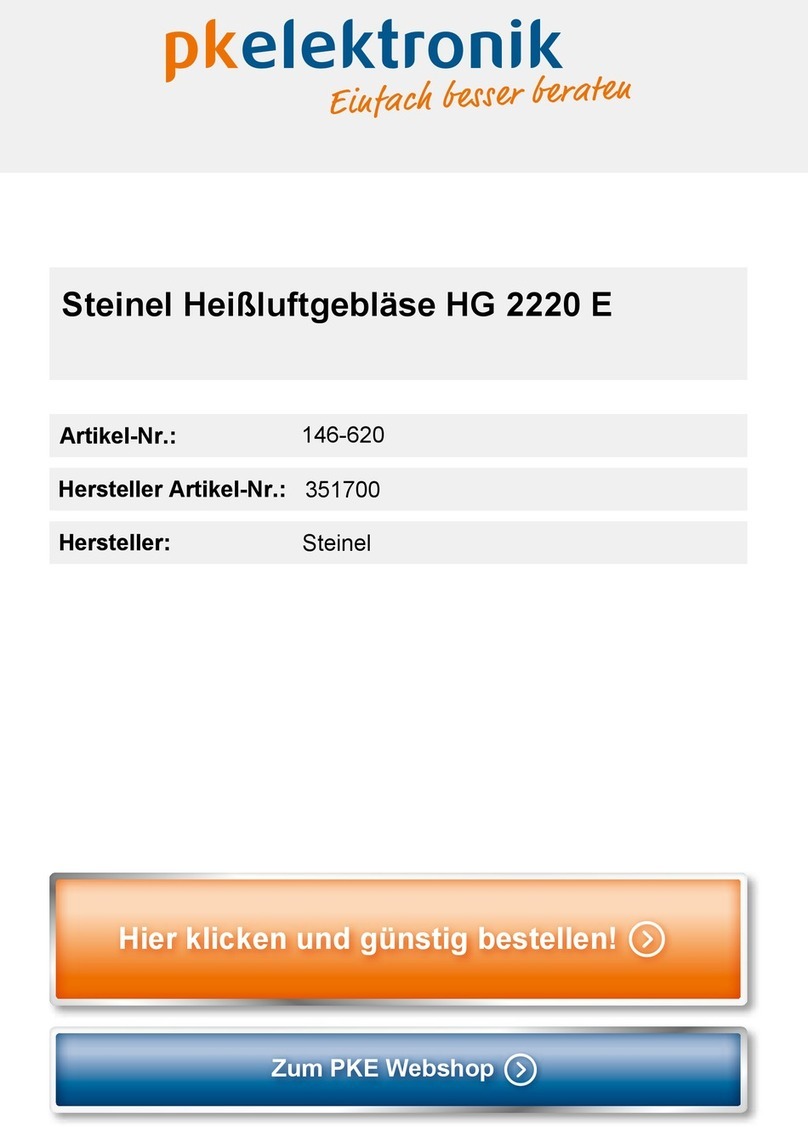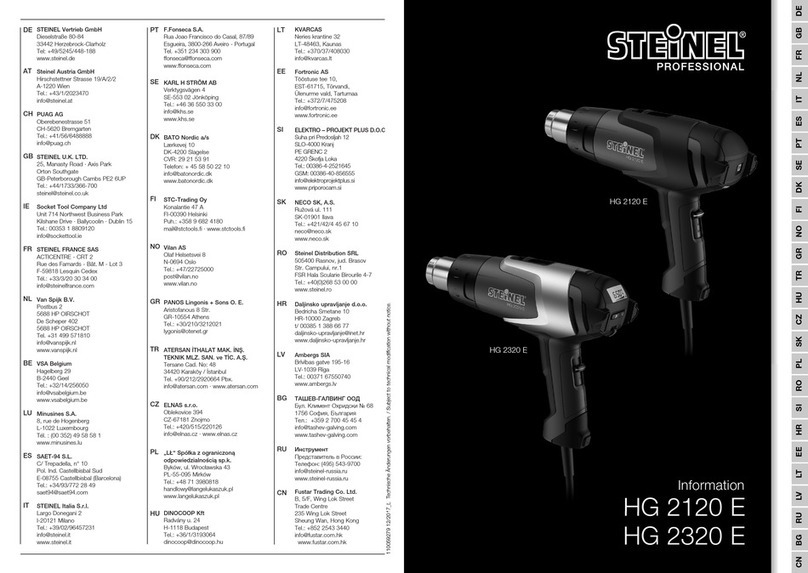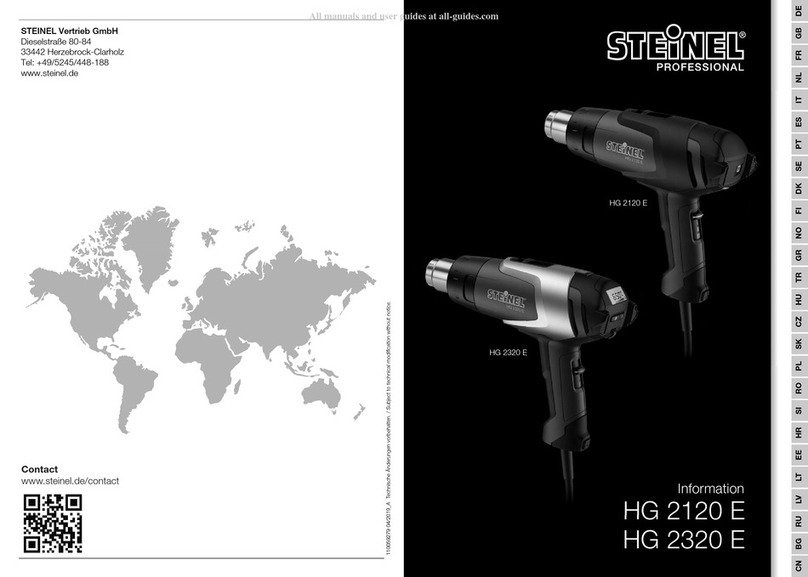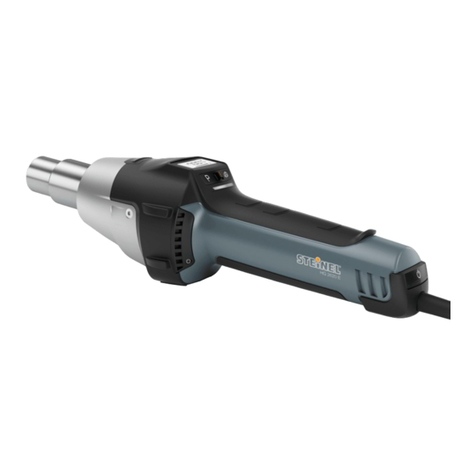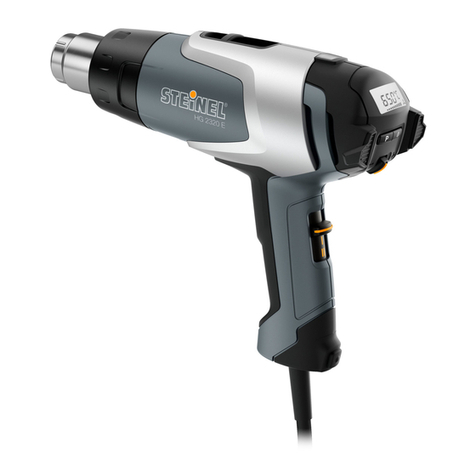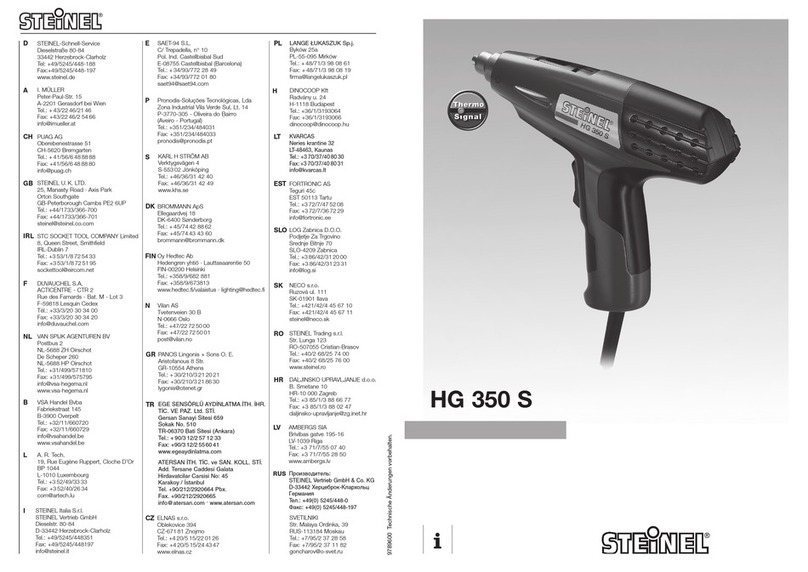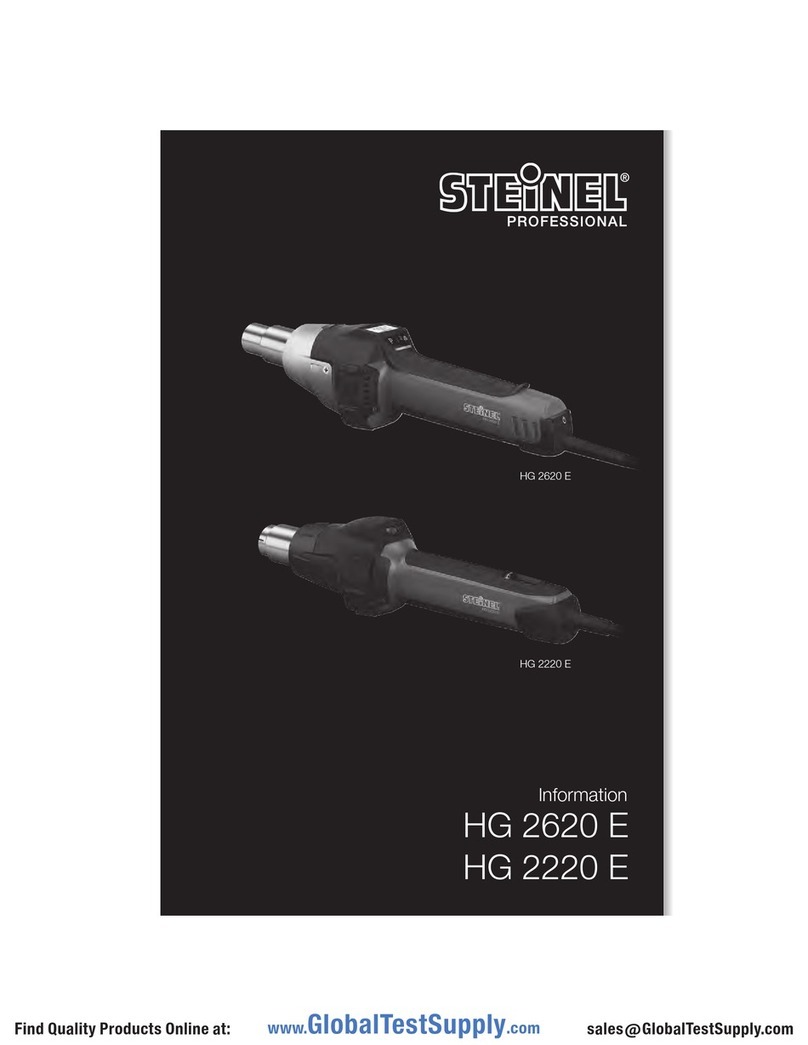
- 2 -
IMPORTANT SAFETY INSTRUCTIONS
READ THESE INSTRUCTIONS
UL WARNING: Read this instruction book before using. To reduce risk of fire or electric shock, do
not expose to rain or moisture. Store indoors. Double insulated. When servicing, use only identical replace-
ment parts. When using electric tools, basic safety precautions should always be followed to reduce risk
of fire, electric shock and personal injury. This hot air gun operates at 1200°F with no visual indication
of temperature (no flame). Never leave device unattended. Otherwise risk of fire. The heat stream at the
outlet nozzle will burn flesh. Do not turn on hot air tool with hand in front of nozzle. DO NOT USE NEAR
COMBUSTIBLE LIQUIDS. DO NOT USE FOR: lHeating gas engines lHeating car batteries lThawing
refrigerator equipment.
WARNING!
This tool is capable of producing temperatures up to 1200° F of flameless heat
at the nozzle. ALWAYS:
l Direct the heat away from yourself and others.
l Prevent ignition of combustible materials on or near the workpiece.
l Prevent blockage of intake and nozzle openings.
l Keep a fully charged fire extinguisher on hand.
l Allow the nozzle and accessory tips to cool to room temperature before storage.
WARNING: Some dust created by power sanding, sawing, grinding, drilling and other construction
activities contains chemicals known (to the State of California) to cause cancer, birth defects, or other repro-
ductive harm. Some examples of these chemicals are:
lLead from lead-based paints,
lCrystalline silica from bricks and cement and other masonry products, and
lArsenic and chromium from chemically-treated lumber.
Your risk from these exposures varies, depending on how often you do this type of work.
To reduce your exposure to these chemicals: work in a well ventilated area, and work with approved safety
equipment, such as those dust masks that are specially designed to filter out microscopic particles.
Cautions
1. WARNING: Hidden areas such as behind walls, ceilings, floors, soffit boards and other panels may
contain flammable materials that could be ignited by the hot air tool when working in these locations.
The ignition of these materials may not be readily apparent and could result in property damage and
injury to persons. Do not use if in doubt about this hazard. When working in these locations, keep the
hot air tool moving in a back-and-forth motion. Lingering or pausing in one spot could ignite the panel
or the material behind it.
2. This hot air tool can produce up to 1200° F of flameless heat at the nozzle. Do not direct airstream at
clothing, hair or other body parts. Do not use as a hair dryer.
3. Do not use near flammable liquids or in an explosive environment (fumes, gases or dust). Remove
materials or debris, that may become ignited from work area.
4. Always hold tool by plastic enclosure. The metal nozzle requires approximately 20 minutes to cool to
where it can be touched. Do not touch nozzle or accessory tips until cool.
5. Do not store tool until nozzle has cooled to room temperature. Place tool in a clear area away from
combustible materials while cooling.
6. Do not cut off airflow by placing nozzle too close to work piece. Keep intake vents clean and clear of
obstructions.
7. Place tool on a level surface when tool is not hand held. Place cord in a position that won’t cause tipping.
8. Do not leave tool unattended while running or cooling down. Otherwise risk of fire.
9. Keep a fully charged fire extinguisher nearby.
10. Do not direct airflow directly on glass.
11. Shield materials around the heated area to prevent damage or fire.
12. Use only with 120 V AC voltage.
13. Do not use in wet conditions.
14. Not to be used by children. This is not a toy and should be respected.
English
www.GlobalTestSupply.com
Find Quality Products Online at: sales@GlobalTestSupply.com
